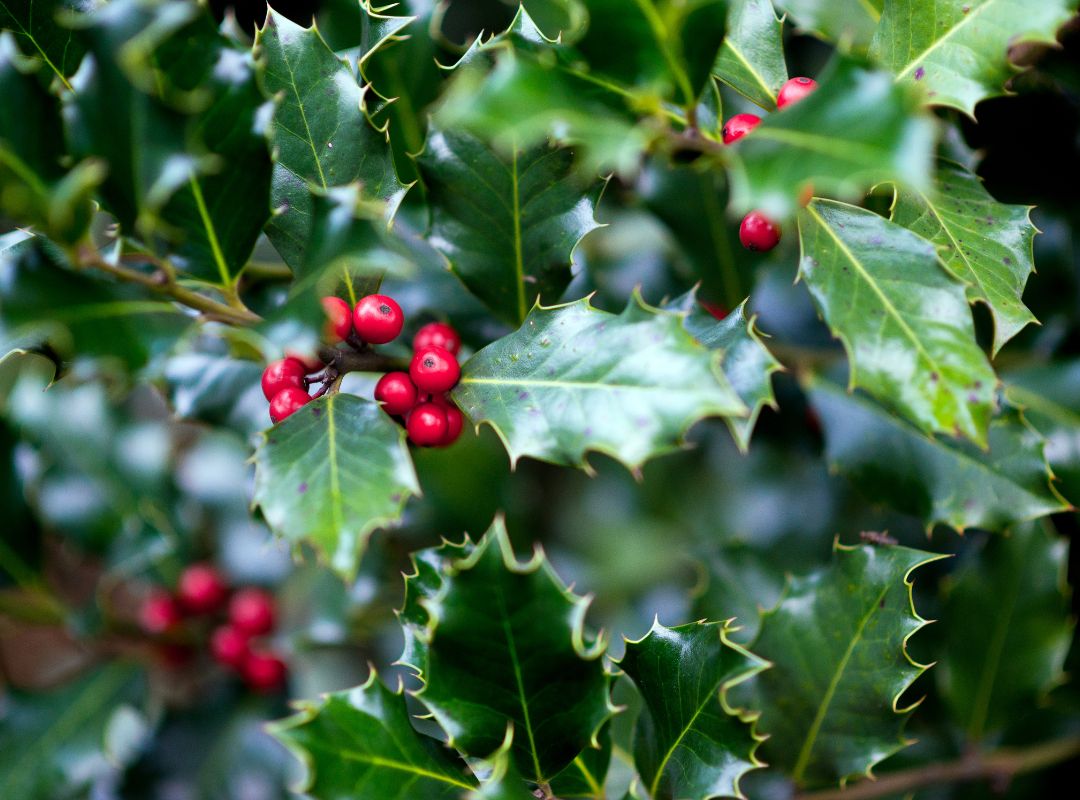I’m an evergreen shrub that grows really tall,
And my leaves stay on through winter and fall.
I’m often used to spread holiday cheer,
Despite making other species disappear!

English Holly has long been used to traditionally decorate for Christmas and even other celebrations that pre-date Christmas, dating back to Ancient Roman times. Ancient Norse, Celtic, and Druids also considered this plant ‘sacred’ since it’s evergreen, and would bring cuttings inside for the winter to protect the wood spirits. Unfortunately, this species is not one that we want spreading in the region, due to its seriously spiky leaves and the impenetrable thickets that it can form.
English Holly, despite what its name suggests, is native throughout Europe. It is said to have been brought to North America in 1620, a week before Christmas. This species is tolerant of a wide range of conditions and easily makes itself at home near residential areas. English Holly is unfortunately still sold in some garden centres, as it offers visual interest in gardens that may otherwise seem a bit bare during the winter months.

English Holly plants can survive for up to 250 years (!), and mature after 10 years. Trees can grow up to 10m tall, but young saplings are typically 1 – 3m tall. Their characteristic leaves are green, shiny, and tough. Leaves on young plants have very spiky edges with sharp spines, but leaves on more mature trees may be less sharp or even have smooth-edged leaves. English Holly has clusters of small, white, inconspicuous flowers that mature into round, bright red berries that are toxic to humans and animals.
English Holly can reproduce either by seed or vegetatively. The seeds are contained in the red berries, which are spread far from the parent plant by birds which can digest them. English Holly can also grow roots from cuttings, regenerate new individuals from stumps and root fragments, and send up new plants from its root system. English Holly branches that touch the soil can also sprout roots – talk about an aggressive spreader!
English Holly’s sharp leaves, aggressive spreading tendencies, and toxic berries make it a harmful species to the rest of our local ecosystems. This species outcompetes the native species around it for water and resources and modifies the soil, adding lots of organic matter and sulphur. Altering soil conditions creates unfavourable environments for native species, further displacing them.
English Holly is easily confused with the native Tall Oregon Grape. Both have sharp, spiky green leaves and produce clusters of round berries. However, Tall Oregon Grape produces dull, light blue berries, whereas English Holly’s are bright red. Tall Oregon Grape can grow up to 2m tall while English Holly can reach 10 m tall, but both are often spotted while they are still smaller shrubs.
Per SSISC’s Invasive Plants Priority List, English Holly is listed as a species to contain in Squamish and is on the prevention watchlist in Whistler and Pemberton. We rely heavily on reports from the public to understand the current distribution of plants in the Sea to Sky and prevent their spread. With that in mind, we invite you to keep your eyes peeled for English Holly and report any sightings.



Add Comment